With a subtle shift in focus and a reduction in size, the Xiaomi 12 is clearly confronting the Samsung Galaxy S21 on compact flagship phone turf.
With the Samsung Galaxy S22 right around the corner – a phone that’s by all reports very similar to its predecessor – it’ll be interesting to see how these two phones compare.
We haven’t had a chance to go hands-on with the Xiaomi 12 just yet, but here’s how it stacks up to the phone that clearly inspired it.
Xiaomi 12 vs Samsung Galaxy S21 price and availability
The Xiaomi 12 hit its home Chinese market on December 31. We don’t know when the phone will receive a global launch, but it’s looking likely to be either February or March.
Initial pricing for the phone in China is CNY3,699, which converts to around $580/£430/AU$800. Naturally, the final price in the West will be a little different, but the point remains that this is an even more affordable flagship phone than the Xiaomi Mi 11 before it.
The Samsung Galaxy S21 arrived on January 29, 2021, and it too took a slightly more affordable approach than previous releases. Prices started from $799 / £769 / AU$1,249 for the 128GB model, while the 256GB model cost $850 / £819 / AU$1,349.
Naturally, with the phone having been on the market for some time, you can get the Galaxy S21 for cheaper if you shop around. Those prices are going to drop further when the Galaxy S22 arrives.
Even so, the Xiaomi 12 is clearly set to be the more affordable phone of the two.
Design
These are two of the smallest Android phones you’re likely to come across. The Xiaomi 12 measures in at 152.7 x 69.9 x 8.2mm, while the Samsung Galaxy S21 measures 151.7 x 71.2 x 7.9mm.
It’s nip and tuck as to which phone is the bigger. However, the Galaxy S21 is significantly lighter at 169g vs 179g.
Part of that difference comes down to battery size, which we’ll discuss in the appropriate section. However, another point to note is that the Galaxy S21’s rear cover is formed from a plastic material that Samsung calls ‘Glasstic’, while the Xiaomi 12 uses the far classier (and heavier) Gorilla Glass Victus.
We prefer the design of the Galaxy S21’s curvy ‘Contour Cut’ camera module, however. It flows into the body much more seamlessly, and generally makes an attractive feature out of a frequently distracting component.
Xiaomi has disappointingly stepped back from its own curved camera module design introduced in the Xiaomi Mi 11. In its place is a rather generic rectangular module, which looks more like Samsung’s own Galaxy Note 20.
The Xiaomi 12 wins some style points back with its curved display, while the Galaxy S21 goes with a more practical but less desirable flat display. Speaking of displays…
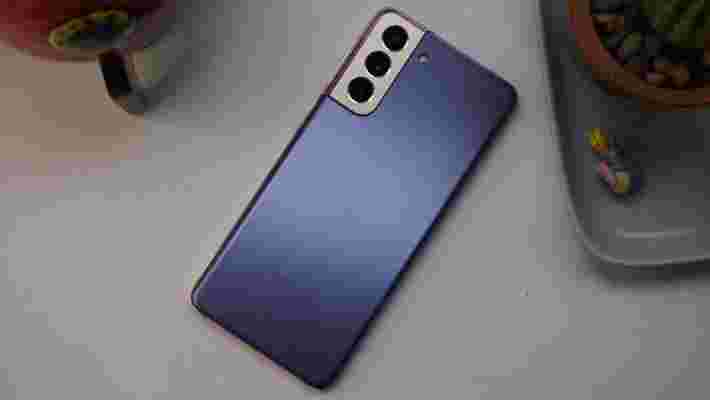
Display
As we’ve discussed, these are two of the more compact Android flagships on the market, which means both phones have smaller-than-average displays.
The Xiaomi 12 screen is fractionally larger at 6.28 inches, whereas the Galaxy S21 has a 6.2-inch display. There isn’t much in it at all.
Both phones have 2400 x 1080 (FHD+) resolutions, and both use vibrant OLED panels with super-fluid 120Hz refresh rates.
Samsung gets a win on the brightness front, with a peak output of 1300 nits. The Xiaomi 12 gets plenty bright, but only to the tune of 1100 nits.
We’ll need to go hands-on with the Xiaomi 12 to determine the quality of its display. All we know for sure is that the Galaxy S21 screen is of a very high quality, and that you need to be a brave person to bet against Samsung’s display technology in any head-to-head.
Camera

Samsung and Xiaomi have taken fascinatingly different approaches with their camera tech. There really isn’t much they share in common on paper.
Both are triple camera systems, but the nature of those cameras differs quite a bit.
The Xiaomi 12 camera is led by a 50MP 1/1.56-inch wide sensor with an f/1.9 aperture. The Samsung Galaxy S21 gives you a 12MP 1/1.76-inch wide sensor. Xiaomi uses pixel binning to achieve results, whereas Samsung goes with fewer but bigger individual pixels.
On the ultra-wide front, the Xiaomi 12 gives you a 13MP 1/3.06-inch 123-degree sensor with an f/2.4 aperture, while the Samsung Galaxy S21 goes with a 12MP 1/2.55-inch 120-degree ultra-wide sensor.
But the real difference comes with that third sensor. The Xiaomi 12 goes with a slightly gimmicky – if undeniably cool, judging from the Xiaomi Mi 11 iteration before – 5MP ‘telemacro’. This lets you take extreme close-ups from a reasonable distance.
In the opposite corner, the Samsung Galaxy S21 gives you a 64MP telephoto sensor, for 1.1x optical zoom shots and 3x hybrid zoom shots.
We’d go with Samsung’s ‘holy trinity’ approach any day, as the provision of a telephoto lens simply gives you more shooting options in a greater number of everyday situations. If you’re really into macro shots, of course, your opinion may vary.
On the selfie front, the Samsung Galaxy S21 gives you a 10MP sensor, while the Xiaomi 12 lays on a more impressive-sounding 32MP sensor. Of course, these are small sensors, so more pixels doesn’t necessarily mean better selfies.
Specs and performance
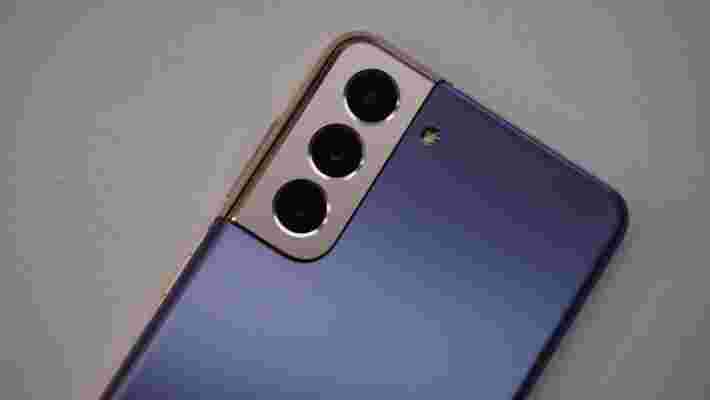
We’re looking at two phones that are a year and a generation apart here, so there’s a clear performance gap. The Xiaomi 12 runs on the latest Snapdragon 8 Gen 1, while the Samsung Galaxy S21 runs on two of the previous generation’s chips.
Those in the US and China get the Snapdragon 888, which is the Snapdragon 8 Gen 1’s immediate predecessor, while the rest of us get Samsung’s own Exynos 2100. This is roughly equivalent to the Snapdragon 888, but a little less capable in the GPU department.
Whichever chip you’re talking about, the Xiaomi 12 comes out top in the performance stakes. The Snapdragon 8 Gen 1 might not be a significant improvement in the CPU stakes (at least according to early benchmarks), but its GPU is a healthy step up.
We’ll have to wait and see if the Xiaomi 12 performs well in day-to-day usage, of course. The Galaxy S21 might not have as much headroom, but if it’s been better optimized, and has more stable software, then that hardware advantage won’t matter too much.
Elsewhere the Xiaomi 12 comes with 8GB or 12GB of RAM, while the Galaxy S21 gives you a fixed 8GB. Both phones offer the option of 128 or 256GB of storage.
Both phones have decent stereo speakers, the Galaxy S21’s provided by AKG, and the Xiaomi 12’s tuned by Harman Kardon.
Battery
The Xiaomi 12 is slightly thicker and heavier than the Samsung Galaxy S21, and part of that is down to its larger battery. It packs a 4,500mAh cell, whereas the Galaxy S21 only has a 4,000mAh equivalent.
It remains to be seen how good the Xiaomi 12’s stamina is, but we weren’t too impressed with the Xiaomi Mi 11’s in 2021.
That said, we weren’t too impressed with the Galaxy S21’s stamina either. Our reviewer could generally get through a full day on a single charge, but more intensive usage would tend to drain the tank before bed time.
The Xiaomi 12 certainly seems to have the Galaxy S21 beat when it comes to recharging. With a 67-Watt charger in the box, it’s capable of going from 0% to 100% in just 39 minutes.
Samsung, by contrast, has only provided 25W charging support, and you don’t even get the brick in the box.
Wireless charging shows a similar gap: 50W for the Xiaomi, 15W for the Samsung. The latter really needs to up its game in this department.
Takeaway
Xiaomi has clearly modeled the Xiaomi 12 on the Samsung Galaxy S21 this year. Like Samsung’s phone, it’s smaller and cheaper than its predecessor, providing a tempting alternative to the more premium flagship crowd.
It remains to be seen if Xiaomi has been successful with this move, which can be viewed as a managed downgrade in certain respects. Samsung was only partially successful with its own attempt, so there’s definitely room for the Xiaomi 12 to go one better.
With greater power and a more premium design than the Galaxy S21, Xiaomi seems to be on the right track. It’ll come down to the software, the camera quality, the battery life, and the all-round feel of the Xiaomi 12, which we won’t be able to judge until the global model rolls out.
The cheapest Samsung tablet deals in May 2022
Samsung tablet deals are often some of the most popular offers during sales periods and throughout the year. With the power to rival the iPad Pro with the S-range and the budget-friendly price tag that serves up excellent value for money in the A-range, there's something for everyone.
Whether you go for the top-of-the-line option with the S8 or stick to a cheaper option with the A8 entirely depends on how you plan on using your new device. We go through all those potential use cases below alongside our roundup of the best Samsung tablet deals available today. That way, you can be confident in the knowledge that you'll come away with the most suitable tablet for your needs.
Do check out today's best Samsung tablet offers below. If you find you'd like to view a few more affordable options then our guide to today's cheap tablet deals has a few more options. We've also gathered together some excellent cheap laptop deals if you decide you need a more fully-fledged machine.
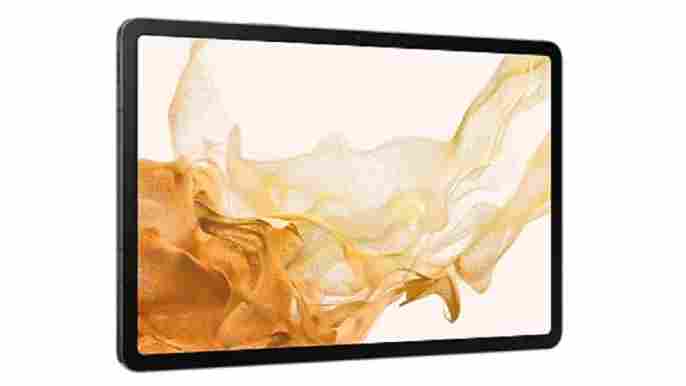
The brand new Samsung Galaxy Tab S8 sports an 11-inch, 2560 x 1600 resolution screen that also offers a high refresh rate of up to 120Hz to deliver a smooth image during demanding tasks such as gaming. It also comes with a 13MP main camera and 6MP wide option on the back, as well as a 12MP ultra-wide front-facing camera best-suited to video calls. 8GB of RAM is included as standard, while storage options include a 128GB or 258GB version, with the option to expand that up to 1TB with a microSD card.
Of course, there are no deals on this model yet as it's so new. In fact, many are still waiting for their pre-orders as the tablet was so popular. You're still able to order one at a number of retailers right now, though, with many still running the promotion that gets you a free year of Disney+ membership with your purchase.
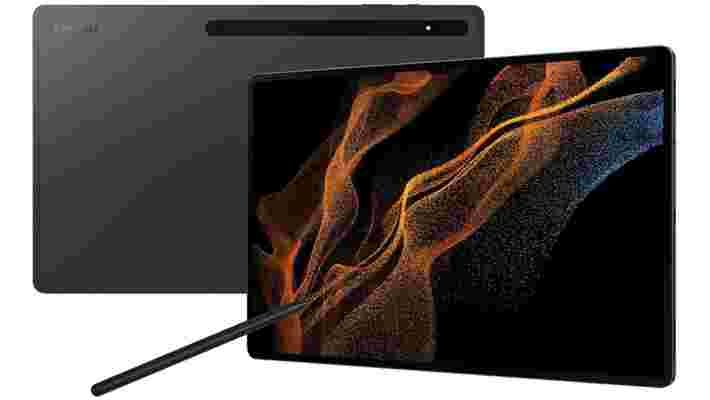
Compared to the standard tablet in this new range, the Galaxy Tab S8 Ultra boasts a much larger 14.6-inch screen. Storage options are available all the way up to 512GB, while there's also an option to increase the RAM to 12GB or 16GB – should you want the performance boost.
Altogether, though, this is a very large, weighty and expensive bit of kit. For the everyday user, this is likely going to be overkill. The focus is definitely on creatives and professionals who need a bigger second screen – and it has the price to match those demands.
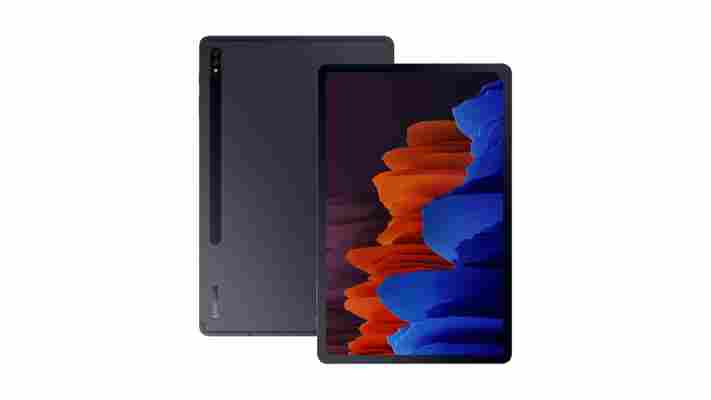
With a 10,090mAh battery and a larger display, the Samsung Galaxy Tab S7 Plus is more designed to replace a laptop in many portable capacities. You're getting a powerful machine here, but at a $200 premium over the standard S7 model below. Considering the processor, storage and memory remains the same between both models this really is one for those who value screen real estate and battery life over all else.
That display panel is really something to celebrate though. With a stunning 2,800 x 1,753 resolution sitting on an OLED screen with a 120Hz refresh rate and HDR10+ built in, it's a delight to watch and with Dolby Atmos audio, even better to hear.
Released in August 2020, Samsung tablet deals have hit this latest release a few times over the course of the last year. That means you'll find it with a $50 - $80 discount if you're shopping at the right time.
If you're looking to pick up the latest model, the Samsung Galaxy S7 will likely be your first port of call. While the S7+ does offer a larger screen and better battery, you're certainly paying for it with MSRP starting at $849.99.
Meanwhile, the standard model comes in at just $649.99 - it's still an expensive tablet, but you're saving $200 here and still getting the same Snapdragon 865+ processor, memory and storage options, and camera specs. You are dropping your screen resolution but that 1600 x 2560 at 120Hz with HDR10+ is certainly nothing to be sniffed at, even if it's running on an LED panel.
The costs cut here are in the battery and screen, and if you're not going to be powering through media-intensive work all day every day, it might be worth considering the cheaper option here.
The Samsung Galaxy Tab S6 Lite actually comes in heavier than the fully fledged model. That's not surprising, though, as the corners cut to achieve such a low price point are plain to see. While those looking for a powerful device to rival the iPad Pro should probably scroll back up to the S6 and S7 models, if you're just looking for a simple tablet to browse the web, stream video, and catch up on some emails the Tab S6 Lite does so in style.
You're still picking up a spacious 10.4-inch display, a strong battery life and grabbing S-Pen functionality (with a free pointer to go with it no less) which puts this model above the budget Tab A versions further down the page. What's more you're still picking that up for a great price, but don't expect this device to replace your main work machine.
Plus, Samsung's tablet deals tend to hit this cheaper model particularly well, meaning you can save some serious cash when the sales do appear.
The Samsung Galaxy Tab A8 is an affordable tablet that still delivers solid performance thanks to the 3GB RAM and Octo-core processor. The latest device in Samsung's range of budget tablets is light and portable, too. Meanwhile, the wide 10.5-inch display and Dolby Atmos surround sound support make it an ideal tablet for watching movies and TV shows. There's an 8MP rear camera and a 5MP front-facing camera on the Tab A8, as well, while it boasts an impressive 13-hour battery life.
It has a recommended price of $219/£219 for the standard WiFi version, but it can often be found for under $200/£200 at a number of retailers. That makes it around $50/£50 more expensive compared to similar-sized cheap tablets from Amazon and Lenovo, but the design and performance improvements are well worth the extra investment in our eyes.
Samsung tablet price vs iPad
Apple's main competitor to the Samsung tablet price is the iPad Air 4 . The Samsung Galaxy Tab S7 is $50 more expensive than the iPad Air 4 when running off MSRP, though we do tend to see more discounts hitting this model than Apple's own offering. Without taking those Samsung tablet deals into account, though, the Samsung Galaxy Tab S7 starts out at $649.99 while the iPad Air's MSRP sits at $599.
However, it's worth noting that you're automatically getting the S Pen included in this price point (the Apple Pencil 2 required for the Air will cost you another $129), and there's double the storage in Samsung's entry level model (128GB compared to the iPad's 64GB).
Not only that, but as you move up the storage ladder you'll find the Samsung tablet price consistently wins out against the iPad Air.
While the display, camera, and battery life are all improved on the Samsung model, Apple does win out in performance. The A14 Bionic chip is an incredible piece of kit to stuff into a tablet, and swings the favor back round with a far better performance overall.
On paper, the Samsung tablet price does offer better value for money for more mid-range use. Those who need their tablet for taking the odd set of notes, emails, streaming, browsing the web and playing a few games will be right at home here. However, if you're a power user looking for top of the range performance we'd take a look at Apple's offering.
If you're looking for a wider variety of manufacturers, make sure you check out our cheap tablets page. And if you're interested in the rival Apple tablets, be sure to take a peek at our roundup of the the best iPad deals .
Hands-on Samsung Galaxy S22 Ultra impressions make it sound sumptuous
Samsung isn’t announcing the Galaxy S22 Ultra until February 9, but some lucky people are already getting access to it, and one of those people has shared their impressions.
A Verizon sales rep posted on Reddit under the name iSmokeGSCookies, claiming that they’ve seen and held the Samsung Galaxy S22 Ultra, and answering questions.
They claimed that the phone looks a lot like the Samsung Galaxy Note 20 Ultra , but seems slimmer and lighter, though slightly wider than the Samsung Galaxy S21 Ultra . The phone apparently has a matte finish on its glass back which “looked amazing in person,” and apparently the S Pen stylus is the same size as the one that comes with the Note 20 Ultra.
They also said that the Galaxy S22 Ultra has a 5,000mAh battery, and that the base model comes with 8GB of RAM and 128GB of storage, but that there are also 256GB and 512GB models, both of which have 12GB of RAM.
The front-facing camera is apparently 40MP, while the rear camera apparently has larger sensors than the Galaxy S21 Ultra, but supposedly the “same software”, which, to be honest, seems unlikely, since Samsung often adds tweaks and features.
There unsurprisingly apparently won’t be a microSD card slot or a headphone port, and they saw the phone in black but were supposedly told there would be other shades too. Finally, there’s said to be no charger in the box, and the Samsung Galaxy S22 Ultra will apparently hit stores on February 25, which we’ve heard before .
Indeed, we’ve heard most of this before, but this is the first time we’re getting impressions of how the S22 Ultra looks and feels in the flesh. Of course, we’d take all of this with a pinch of salt – while it’s believable that a Verizon employee would have seen the phone, they haven’t provided any evidence of this.
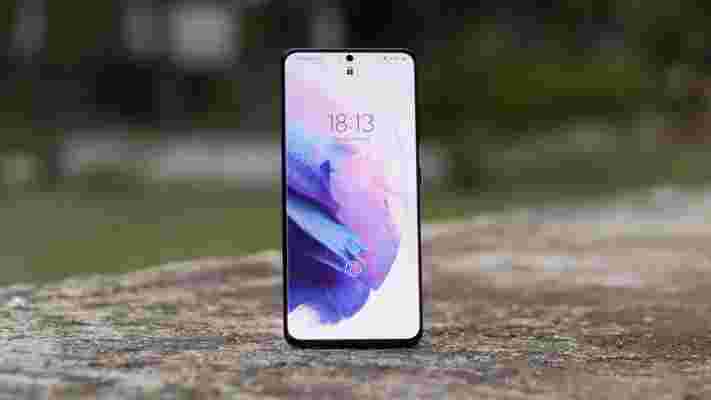
Analysis: this could be the premium flagship Samsung needs
The Samsung Galaxy S22 Ultra was always going to be a top-end phone, and for a while now it’s sounded like it would be the most interesting model in the range too, but it’s only with these impressions that we’re getting a sense of just how premium it might really look and feel.
From iSmokeGSCookies comments, it sounds like they were thoroughly impressed with the Samsung Galaxy S22 Ultra from a design and build standpoint, calling it “amazing” and “an easy sell”, and comparing the finish to the iPhone 13 Pro .
This is reassuring, as it’s sure to be a very expensive phone, and with the standard Galaxy S22 and the Samsung Galaxy S22 Plus seemingly looking a lot like their predecessors, they might not exactly wow most buyers. But based on these impressions the Samsung Galaxy S22 Ultra probably will.
Via BGR